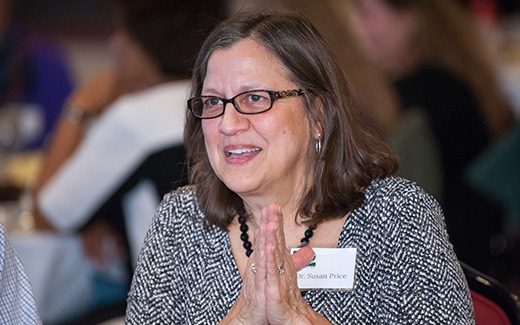Program Goals and Outcomes
- Home
- >
- Academics
- /
- Occupational Therapy
- /
- Program Goals and Outcomes
- Academics
- Occupational Therapy
- Program Goals and Outcomes
Occupational Therapy
Main Menu
@
5 years ago
Program Goals and Outcomes
OCCUPATIONAL THERAPY DOCTORAL PROGRAM PHILOSOPHIES:
The Kettering College Occupational Therapy Program has adopted the American Occupational Therapy Association (AOTA) Philosophical Base of Occupational Therapy, the AOTA Commission of Education (COE) Philosophy of Occupational Therapy Education, and the Occupational Therapy Practice Framework (4th ed) as guiding documents for our Program Philosophies. The fundamental beliefs about humans and how people learn is adapted from Andragogy (Knowels, 1980).
Occupations and Occupational Therapy
Occupations are the things people want and need to do; often chosen occupations are influenced by the cultural context. It is important that therapists understand the cultural context of occupation and how it influences the interactions of people as they engage in occupations. Occupations and engagement in occupations are basic human rights and impact the overall health and well-being of human beings. Not all human beings are afforded the privilege to engage in fundamental occupations. Furthermore, many people have limited opportunities to engage in and to excel in occupations beyond those that support basic human survival. The call of occupational therapy, and practicing therapists, is to help any individual, group, community, or population fulfill their desire to not only survive but also to thrive in their daily engagement in occupations with the support of or despite their environmental or personal factors.
Philosophical Base of Occupational Therapy. Am J Occup Ther 2017;71(Supplement_2):7112410045. https://doi.org/10.5014/ajot.2017.716S06
Occupational Therapy Practice Framework: Domain and Process—Fourth Edition. Am J Occup Ther 2020;74(Supplement_2):7412410010. https://doi.org/10.5014/ajot.2020.74S2001
Fundamental Beliefs About How Human Beings Learn
Human beings have an innate drive to learn. Learning prepares people for full participation in the occupations of life. The learning process is unique for each individual and based on multiple dynamic variables of personal and environmental factors such as individual personality, the purpose for learning, the learning environment, the time frame for learning, and the complexity of information to be learned. Acquisition of knowledge and skills occurs through seeking, reflecting, hands-on practice, and self-assessment. Successful educators facilitate and mentor learners in methods that support life-long learning.
Within the OTD Program we strive to teach from a multimodal pedagogy that demonstrates our commitment to a student-centered learning environment. Throughout the program students will have the opportunity to experience lecture-based learning, hands-on learning, problem-based learning, etc. It is our belief that by teaching from several different pedagogies, students will acquire the needed skills to become a board certified and state licensed occupational therapist. Ultimately the goal of all faculty within the OTD Program is to meet the learning needs of all students enrolled in the Kettering College OTD program.
Philosophy of Occupational Therapy Education. Am J Occup Ther 2018;72(Supplement_2):7212410070. https://doi.org/10.5014/ajot.2018.72S201
CURRICULUM DESIGN
The occupational therapy curriculum design is organized based on the human development model of disability, health, and well-being for a conceptual framework and the three domains of Bloom’s Taxonomy as the categories of educational activities. The human development model is used to guide the students in learning and understanding the impact of both personal factors and environmental factors on occupational performance during the life span of individuals. By recognizing that occupational performance and engagement do not happen solely within the realm of an individual, we acknowledge that even absent disability or illness and/or in the presence of wellness, all individuals do not experience optimal occupational performance equally, equitably or with justice. This foundational framework allows students to develop critical thinking and clinical reasoning while also applying cultural proficiency in a client-centered manner. Additionally, the three domains of Bloom’s Taxonomy (knowledge, skills, and attitude), are also applied throughout the curriculum. The curriculum involves the acquisition of knowledge and the development and shaping of intellectual skills to transform students’ critical thinking along the continuum of factual knowledge to metacognitive knowledge. The ability to critically examine information and create effective intervention is of utmost importance and is used extensively in the curriculum. Personal attitude is important in all professions, and even more so in a clinical profession such as occupational therapy. Therefore, students’ awareness of their personal and professional strengths and opportunities is strongly emphasized from day one of the curriculum. This is accomplished through self-assessment and reflection, peer feedback, faculty feedback, and professional feedback from clinical educators.
Main threads of the Occupational Therapy Curriculum Design and Student Outcomes
-
-
Student-Centered Learning
The concept of student-centered learning drives the occupational therapy curriculum. Students benefit most from active, experiential learning including laboratory experiences, case based problem solving exercises, fieldwork experiences, and participation in projects and discussions.
Student Learning Outcomes: The student will become a committed life-long learner and will practice a client-centered approach with a broad exposure to occupational therapy areas of practice.
-
Occupation-Based Practice
Woven throughout the curriculum and emphasized in all core theoretical and clinical courses is the importance of the use of occupations as a means and ends of clinical practice. Students are encouraged to use occupation as the main therapeutic tool.
Student Learning Outcomes: The student will demonstrate the use occupations not only in the assessment of clients but also as therapeutic tools to assist clients in regaining occupational identity.
-
Client-Centered Practice
Also woven throughout the curriculum and emphasized in all core theoretical and clinical courses is the importance of a client-driven therapeutic approach and the collaborative manner in which occupational therapists relate to clients.
Student Learning Outcomes: The student will uphold the knowledge that increased client participation in the rehabilitation process results in enhanced functional and occupational outcomes.
-
Evidence-Based Practice
The first year includes didactic coursework on the core concepts of evidence based practice and advanced measurement. Woven into the coursework for the rest of the curriculum are opportunities to apply evidence to case examples on OT practice.
Student Learning Outcomes: Students will use and apply critical analysis of evidence during the occupational therapy process and to participate in clinical research.
-
Social-Cultural Interactions
Throughout the curriculum, students gain an appreciation for diversity of cultures, interests, roles, abilities, and opportunities prevalent in society and the border communities of Southern Ohio.
Student Learning Outcomes: The student will demonstrate knowledge and appreciation of the role of clients’ sociocultural backgrounds on health and participation in occupations.
-
Reflective Learning
Throughout the curriculum, students are required to assess their professional behavior using a portfolio-based reflection tool and a Professional Skills Assessment tool. This tool encompasses areas such as communication, commitment to learning, time management, problem-solving, and critical thinking. Students identify areas that need to be improved and document their goals, desired outcomes, and approaches to reach those outcomes. Students meet at midterm each semester to discuss with advisors their goals and outcomes. This process encourages students to become reflective learners and reflective clinicians.
Student Learning Outcomes: Student will display a transformation from a student to a health care professional who will be able to communicate and demonstrate use of self effectively as well as modify behavior as required.
-
Faith-Based Service
Beginning the first semester, students explore whole-person wellness, and how it relates to client beliefs, values, spirituality, and religious practices. Students also explore, within the curriculum, the concept of service and how occupational therapists can use service as an avenue to advocate for occupational justice and whole person health with individuals, groups, communities, and populations. Throughout the curriculum, students have classroom and community opportunities to plan and participate in service; this allows them to begin or continue a habit of service, personally and professionally, and to demonstrate their commitment to others in local and global communities. Students will document a minimum of 5 hours of service each semester.
Student Learning Outcomes: The student will uphold concepts of service and whole person health as it relates to individual client factors in order to advocate for clients who are experiencing occupational dysfunction, alienation, or deprivation.
-



